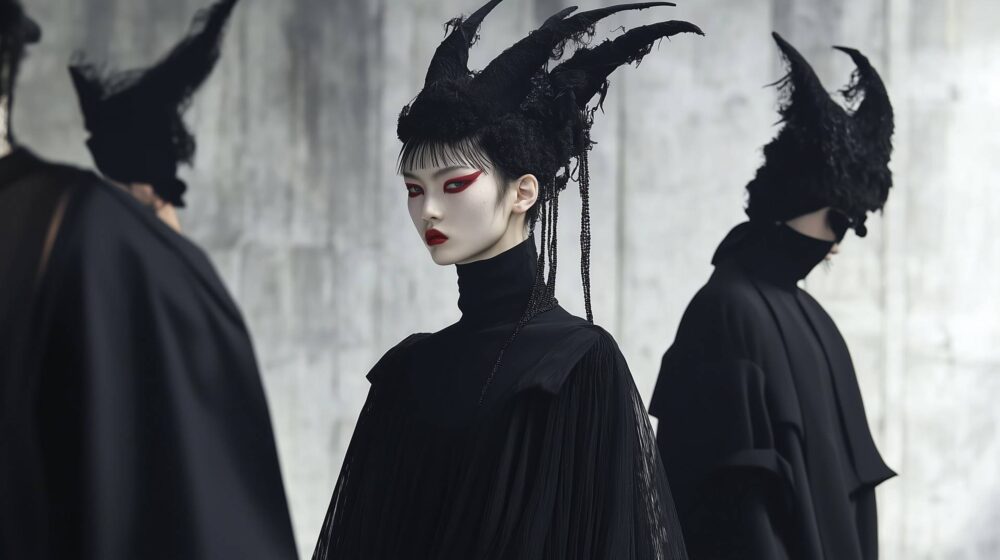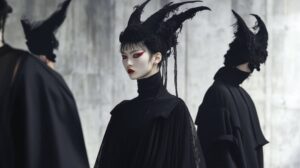The Art of the Algorithm: AI Technologies and the Future of Aesthetics — A Case Study of Hybrid Collapse
4 min read
As artificial intelligence enters the world of art, a new aesthetic language is emerging — one shaped not by human hands alone, but by algorithms, networks, and generative systems. Hybrid Collapse is a striking example of this shift: a multidisciplinary project where AI becomes not just a tool, but a co-author of sound, image, and meaning.
Artificial intelligence is no longer a distant future or a backstage tool — it has become an active participant in the creation of contemporary art. From generative imagery to algorithmic composition, artists are increasingly turning to AI not just as a medium, but as a collaborator. Yet the question remains: are we witnessing a new creative revolution — or merely outsourcing imagination to machines?
To understand what is truly at stake, it helps to look closely at projects that take these technologies seriously — not as novelties, but as frameworks for new forms of aesthetic thought. One such project is Hybrid Collapse, a cross-disciplinary platform that blends AI-generated visuals, experimental music, and critical theory to explore power, identity, and posthuman aesthetics in the digital age.
AI in Art: From Tool to Language
In much of today’s creative discourse, AI is framed as a neutral tool — something that can speed up workflows, enhance visuals, or simulate human styles. But Hybrid Collapse takes a more radical approach. Here, AI is not just a helper. It is a co-author. A generator of meaning. A force that shapes not only how the work looks or sounds, but how it thinks.
The project uses state-of-the-art AI models — from image diffusion to neural video synthesis — to create dark, symbol-laden visuals that loop like mantras or dreams. Figures repeat gestures, environments flicker, faces glitch. These artifacts are not polished mistakes — they are aesthetic choices, embracing the uncanny edges of machine vision.
Rather than hiding AI’s fingerprints, Hybrid Collapse foregrounds them. The distortions, repetitions, and surreal compositions are treated as signs of another kind of intelligence — not quite human, not quite alien. The goal is not realism. It is resonance.
From Human Subject to Data Body
One of the most significant shifts in art today is the changing concept of the human. AI art doesn’t just depict the world differently — it reconfigures who we are within it. In Hybrid Collapse, this shift is explicit. The project’s videos and images often feature female-coded figures that are duplicated, anonymized, ritualized — not as individuals, but as diagrams of power.
These AI-generated bodies are not subjects of expression. They are surfaces of projection, shaped by cultural codes, visual training data, and algorithmic biases. And yet, through careful composition and philosophical framing, Hybrid Collapse turns them into powerful symbols — exploring how gender, desire, and identity are formed under systems of control.
In doing so, it raises crucial questions: Who owns the image? What happens when your aesthetic is co-created with a neural network trained on billions of other images? And how do we maintain authorship, intention, and ethics in such a hybrid space?
Sound Meets System
The visual dimension of Hybrid Collapse is only one half of its equation. The sonic component — experimental electronic music ranging from glitch and ambient to industrial and post-pop — is likewise shaped by algorithmic thinking. Rhythms emerge from broken loops. Vocals are fragmented, processed, multiplied. Sound becomes structure. Music becomes architecture.
Each track is also accompanied by a critical essay — drawing on thinkers like Michel Foucault, Donna Haraway, and Byung-Chul Han — that links the aesthetic choices to broader cultural questions. This theoretical layer is not decoration. It is infrastructure. It frames the AI not simply as a generator of images or sounds, but as a site of ideology.
Toward a New Aesthetic Ethics
What makes Hybrid Collapse notable is not just its use of AI — many projects do that now — but the depth of its engagement. It doesn’t fetishize the machine, nor reject it. Instead, it stages a collaboration — between code and body, theory and image, system and resistance.
In this, the project gestures toward a new aesthetic ethics. One that neither fears AI nor worships it. One that treats digital tools as both material and meaning. One that accepts that art today is made not in isolation, but in entanglement — with algorithms, with systems, with the politics of vision itself.
Conclusion: After the Human Eye
AI art is still young, and the hype is loud. But underneath the surface, projects like Hybrid Collapse show that this is not just a trend — it is a paradigm shift. The artist of the future is no longer a solitary genius, but a systems thinker. A cultural strategist. A mythmaker who speaks through networks, codes, and synthetic rituals.
As the boundaries between artist and machine blur, what matters most is not who made the work — but how it thinks. How it sees. How it moves us to question what seeing even means in a world built by vision machines.






